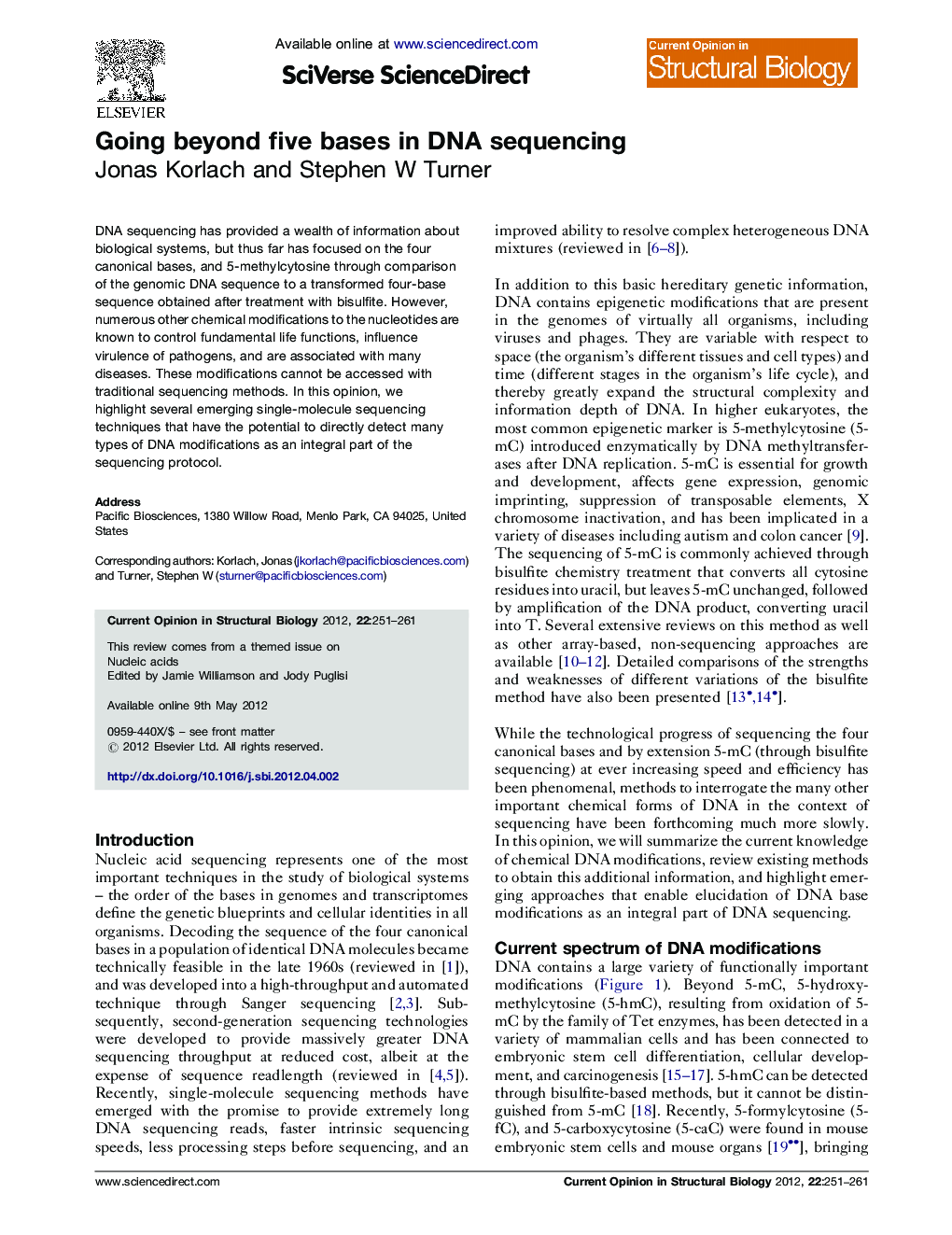| Article ID | Journal | Published Year | Pages | File Type |
|---|---|---|---|---|
| 1979076 | Current Opinion in Structural Biology | 2012 | 11 Pages |
DNA sequencing has provided a wealth of information about biological systems, but thus far has focused on the four canonical bases, and 5-methylcytosine through comparison of the genomic DNA sequence to a transformed four-base sequence obtained after treatment with bisulfite. However, numerous other chemical modifications to the nucleotides are known to control fundamental life functions, influence virulence of pathogens, and are associated with many diseases. These modifications cannot be accessed with traditional sequencing methods. In this opinion, we highlight several emerging single-molecule sequencing techniques that have the potential to directly detect many types of DNA modifications as an integral part of the sequencing protocol.
► DNA contains a large variety of chemical modifications to the nucleotides. ► They are increasingly appreciated to mediate important biological functions. ► Most modifications cannot be accessed with traditional sequencing methods. ► Several new sequencing techniques promise to directly detect many DNA modifications.
